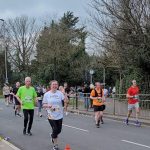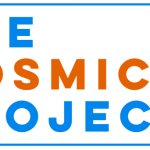Riding for Margaret
On Saturday 4th June, Kerstin Kramer will take on the 3 Pistes Sportive (the UK’s highest cycle sportive) in support of brainstrust. In an epic challenge, she will be tackling 8 categorised climbs, 5 of the UK’s 6 highest roads and 3 Scottish ski centres – all spanning 103 miles.
When the ride was originally planned, Kerstin and her close friend and fellow GP, Margaret had pledged to conquer this incredible challenge together. But sadly, last November Margaret was diagnosed with a brain tumour and suddenly had to face a very different type of challenge. In this moment, Margaret and her family reached out to brainstrust for support, and found an understanding community ready to welcome them with open arms. Whilst Margaret had to withdraw from the challenge, Kerstin has chosen to ride in her honour, and has already raised over £2,000 in support of her chosen charity brainstrust, and the wider the brain tumour community.
We reached out to Kerstin ahead of the big day, and loved hearing all about her friendship with Margaret which began 27 years ago.
“My husband joined Margaret’s GP practice in 1995. Right from the beginning [Margaret] inspired me as she managed to combine working and motherhood (3 children), with prize-winning running and cycling performances. A few months later I joined her husband’s practice where I worked for over 20 years. So we have all had a long and close professional/personal relationship. Margaret and her husband were leagues ahead of us in cycling and running, but we were able to enjoy hiking together (though of course I struggled to keep up!)”“Anyone can suddenly receive a diagnosis of a brain tumour at any time or age. This happened last November to my great friend/retired GP/cycling inspiration/coast-to-coast buddy Margaret. She ‘persuaded’ me to enter this somewhat daunting cycling challenge with her last year, then subsequently received her diagnosis. Margaret is putting her inspiring courage, strength and endurance, developed over her years of elite endurance running and cycling, to good use in dealing with the disease and its treatment, so won’t be on the start line. She and her family have received great support from brainstrust in coping with the disease, [so I’m raising funds] for this important organisation!”
“The reason I’m taking part in the 3 pistes sportive is that Margaret would absolutely love to do it if she could. I am lucky enough to still have my health so am doing it for her, although I will be hours behind her usual speed! If I can raise funds for [this] fantastic charity, that will spur me onto the finish line also.”
Training for the challenge
Kerstin has been training for the 3 Pistes Sportive for some time now, and continues to build in confidence. Her training rides have included events like the The Etape Caledonia, a stunning closed road ride amidst the Scottish Highlands:
“[This] was awesome – my big “training ride” for the 3 pistes. It’s amazing what you can do if you eat enough flapjacks! [It was] a huge help doing it with husband Graham and brother Stewart making a wee team to work together into the head wind. Not far behind was my niece Emma and her mum/my sister-in- law Lesley. Family fun!”
“My next training ride will be 100km over the 2nd Piste (The Lecht). We did the 1st Piste (Glenshee) a couple of weeks ago! We’ll do the Final 3rd Piste (Cairngorm) the weekend before, so at least we will have confronted the demons before Race Day! We are lucky to live locally to the route so it is ‘easy’ to train on the deadly climbs.”
Making a Difference
“Without counselling I would not have been able to face my neuro appointment with such positivity and hope.” – Patient
If you feel inspired by Kerstin’s story and you want to get involved and support brainstrust, head to our fundraising page to find out about all the ways you be a part of our mission.









